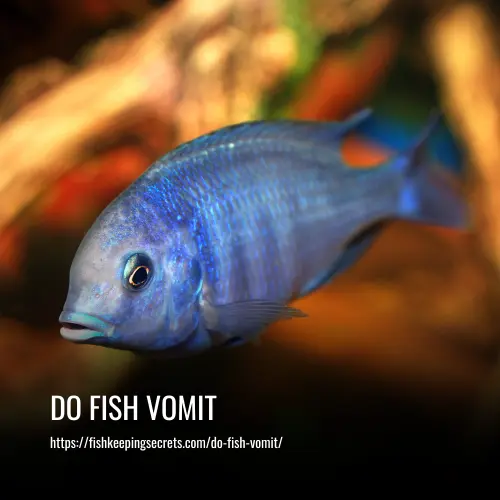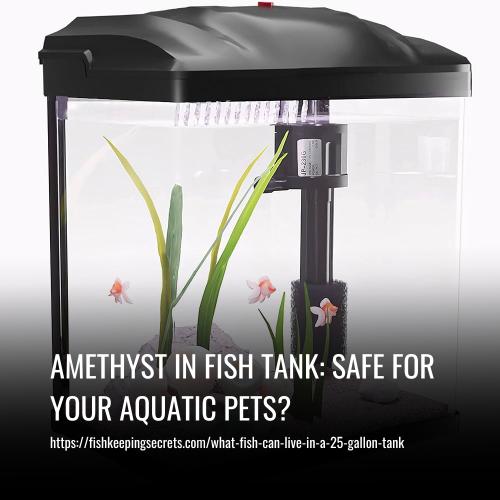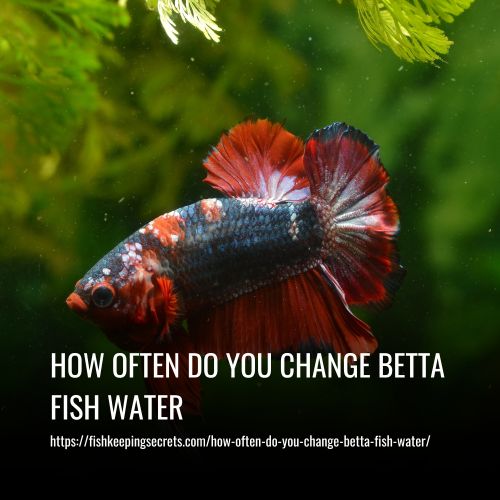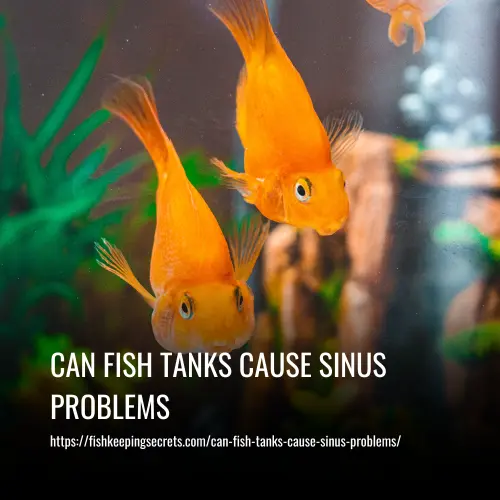How To Get Rid Of White Fungus In Fish Tank
This post contains affiliate links. As an Amazon Associate, we earn from qualifying purchases.
White fungus in a fish tank is not only unappealing to look at, but it can also be harmful to your fish. If left untreated, the fungus can spread and cause health problems for your underwater pets. Luckily, getting rid of white fungus in a fish tank isn’t as difficult as you might think.
To Get Rid Of White Fungus In Fish Tank, follow these steps:
- Wash Your Hands.
- Transfer Your Fish To a Quarantine Tank.
- Remove All Decorations and Wash.
- Remove All Plants and Clean.
- Wash The Gravel.
- Use Fungus Treatment.
- Wait And Observe.
- Soak in Warm Treated Water.
- Rinse with Warm Water.
- Replace Filter Media.
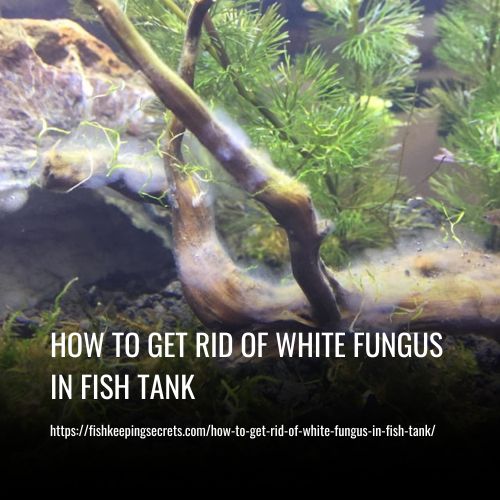
How To Get Rid Of White Fungus In Fish Tank
If you notice white fungus growing in your fish tank, it’s crucial to remove it quickly, as it can be incredibly harmful to your aquatic pets. White fungus or mold can cause a range of health issues, including eye infections, digestive problems, and swim bladder complications. Here are some steps you can follow to eliminate this pesky fungus from your aquarium.
1. Wash Your Hands:
To effectively address the issue of white fungus in your fish tank, it is crucial to observe proper hygiene. Thus, before starting any treatment, make sure to wash your hands thoroughly with soap and water. This simple step can help prevent further contamination of your tank by bacteria and fungi.
Additionally, you may also want to consider cleaning any aquarium tools you will be using during the treatment. By taking these precautionary measures, you can ensure the success of your efforts to get rid of white fungus in your fish tank.
2. Transfer Your Fish To a Quarantine Tank:
If white fungus is found in a fish tank, prompt action is necessary to prevent harm to the fish. A recommended solution is transferring the fish to a separate quarantine tank which offers a secure environment while the primary tank undergoes treatment. It’s also a suitable place for administering medicine and treating any parasites or illnesses that the fish may have.
Many experienced aquarists suggest keeping at least one quarantine tank on hand since they can come in handy during emergent situations like this. By transferring your fish to a quarantine tank, you can contain any potential disease and protect the health of your aquatic pets.
3. Remove All Decorations and Wash:
To effectively eliminate white fungus from your fish tank, it’s important to start by removing all the decorations and stones inside. After taking them out, make sure to wash them meticulously, ensuring that there are no residual fungi or spores left on them.
It’s essential to be thorough in your cleaning process to prevent any potential regrowth of fungus. Remember to also wash your hands and let them dry before handling any aquarium items again. With these steps taken, you’re on your way toward a clean and healthy fish tank.
4. Remove All Plants and Clean:
If you want to get rid of white fungus in your fish tank, it’s important to take a thorough approach. One effective method is to remove all plants from the aquarium and clean them with a wet cloth. This will help ensure that any traces of fungus are removed.
Once you’ve finished cleaning the plants, rinse them under running water and let them dry before placing them back into the tank. And don’t forget to wash your hands afterward to prevent the spread of any remaining fungus!
5. Wash The Gravel:
Another step that you can take to get rid of white fungus in your fish tank is washing the gravel. First, you should remove the substrate from your tank and then give it a thorough cleaning. One effective method is to put it in boiling water for at least 30 minutes, as this will kill any fungus spores that are present.
However, keep in mind that this process will also eliminate the beneficial bacteria within the gravel. Therefore, rinse it well with hot water before letting it dry. This step is crucial to ensure that no harmful elements or debris remain in your tank which could negatively impact your fish’s health.
6. Use Fungus Treatment:
Dealing with white fungus in your fish tank can be a daunting task, but one solution is to use specifically designed fungus treatment products. After removing all items from the tank and leaving only water, you can begin treating it for fungus.
It’s important to pay attention to the dosage instructions for each product and conduct research before using them. Moreover, it is critical not to change the water during this process to prevent chemical imbalances in the aquarium water. By using quality fungus treatment solutions and following proper procedures, you can effectively get rid of white fungus in your fish tank.
7. Wait And Observe:
To ensure that white fungus is no longer a problem in your fish tank, you’ll need to follow the necessary steps carefully. Once you’ve completed all the steps, it’s important to wait for at least 12 hours before reintroducing everything back into your aquarium. This will enable you to observe any possible return of the fungus.
If the white fungus does come back after a few days or weeks, don’t worry – simply repeat the process and take the necessary steps to eliminate it again. Waiting and observing are crucial elements when monitoring and maintaining the health of your fish tank.
8. Rinse with Warm Water:
Cleaning a fish tank filter can be quite an easy task, especially for mechanical and chemical filters where bacteria are not involved. One effective way to clean these types of filters is by rinsing them with warm water and giving them good scrubbing. This will help loosen up any debris or fungus buildup that may be stuck on the filter.
Once you have thoroughly rinsed and cleaned the filter, make sure to let it dry completely before putting it back into your aquarium. By following these simple steps, you can easily deal with any white fungus that may accumulate in your fish tank filter, ensuring that your aquatic pets have a clean and healthy environment to thrive in.
9. Soak in Warm Treated Water:
Dealing with white fungus in your fish tank filter can be a bit tricky. While it’s a sign that the filter is doing its job in cleaning your aquarium, you may want to give it some extra attention. One possible solution is to soak the filter in a bucket of warm water that has been conditioned and remove any debris that has accumulated on it.
Afterward, rinse the filter using water from the aquarium to ensure that it’s completely clean. Soaking the filter in warm treated water will not only help get rid of any unwanted debris but also provide an additional layer of cleaning for your fish tank filter.
10. Replace Filter Media:
When your fish tank filter is plagued by a white fungus, it’s necessary to take action to eliminate the problem. One possible solution is replacing the filter media. However, when you do this, keep in mind that the good bacteria present in your aquarium will attempt to rebuild themselves afterward. This could lead to cloudy water which can be detrimental to your aquatic pets.
What Is White Fungus On The Fish Tank?
If you’ve been seeing white fuzzy patches in your fish tank, chances are you’re dealing with white algae. This pesky type of algae tends to spread quickly and can be found growing on a variety of surfaces within the aquarium such as rocks, driftwood, or even plants. You may notice thin, stringy substances that cling to leaves or glass, which are indicative of the presence of white algae in your aquarium.
It’s important to address this issue promptly as it can cause aesthetic and health problems for your fish if left unchecked. Regular cleaning and maintenance routines along with appropriate treatment options can help control the growth of white algae in your fish tank.
Is It White Algae or Fungus?
It can be difficult to tell whether the white growth in your aquarium is algae or fungus. But don’t worry, there are some ways to distinguish between them! Fungi typically appear dry and powdery while white algae tend to have a slimy texture.
White algae can often be found clustering on the surfaces of aquarium glass, plants, or decorations, while fungi tend to grow in small patches on the gravel or substrate.
Despite their differences, algae and fungi share many similarities in terms of what makes them grow and how to control them. So, regardless of whether it’s algae or fungus in your fish tank, you should be able to find effective solutions for getting rid of them.
Is White Fungus on Driftwood Harmful to Fish
If you notice white fungus growing on driftwood in your aquarium, don’t panic, it won’t harm your fish. It might cause minor disturbances to their routine activities, but that’s it. In fact, some fish and snail species like Otocinclus catfish, bristle nose pleco, and snails will actually eat the fungus off for you.
If the white fungus remains untouched though, it will eventually go away on its own within a short period of time without causing any harm or stress to your fish. However, if you’re still worried about it, you can remove the affected driftwood from the tank and manually scrape or scoop off the fungus.
Will a UV Light Kill The White Fungus In a Fish Tank
If you’re dealing with white fungus in your fish tank, you might be wondering if UV light can help get rid of it. While UV light or ultraviolet light is effective at killing parasites, viruses, algae, and other microbes in the water by disrupting their DNA, it’s important to note that a UV sterilizer is not specifically designed to target white fungus. It can certainly help maintain clean and healthy water by eliminating harmful microorganisms, but it’s not a guaranteed solution for getting rid of white fungus.
Additionally, if you’re already using chemical treatments in your fish tank, it’s not recommended to use a UV sterilizer at the same time as it could interfere with the effectiveness of the chemicals. Plus, keep in mind that you’ll need to replace the light bulb in your sterilizer every six months for optimal performance, which can add up in cost over time.
FAQs
White fungus, often resembling a cottony growth, is typically caused by a fungal infection due to poor water quality, overfeeding, or decaying organic matter in the tank. It can also be introduced through new fish or plants.
To eliminate white fungus, first, improve water quality by performing regular water changes and maintaining proper filtration. Remove any decaying organic matter and vacuum the substrate. Treat the tank with a fungal medication specifically formulated for aquarium use, following the manufacturer’s instructions.
While some hobbyists suggest using household remedies like salt or hydrogen peroxide, it’s crucial to exercise caution as these can harm fish and beneficial bacteria in the tank. It’s safer and more effective to use commercially available fungal medications designed for aquarium use.
If fish show signs of fungal infection, such as white patches on their bodies or fins, they should be quarantined in a separate tank to prevent the spread of the fungus. Treat the affected fish in quarantine with appropriate medication while addressing the fungus in the main tank.
The duration to eliminate white fungus depends on various factors, including the severity of the infection, water quality, and treatment efficacy. With proper treatment and maintenance, fungal infections can be resolved within a week or two. However, it’s essential to continue monitoring water parameters and performing regular maintenance to prevent recurrence.
To prevent the recurrence of white fungus, maintain optimal water parameters, avoid overfeeding, and promptly remove any uneaten food. Regularly clean and maintain the aquarium equipment, including filters and heaters. Quarantine new fish and plants before introducing them to the main tank to prevent the introduction of fungal spores. Additionally, ensure proper tank hygiene by performing routine water changes and substrate vacuuming.
Conclusion:
By following the steps outlined above, you should be able to effectively get rid of white fungus in your fish tank. Keep in mind that prevention is key and maintaining a clean and healthy environment for your fish is crucial.
Regular water changes, filtration system maintenance, and proper feeding habits can help prevent the growth of unwanted substances like white fungus. With some patience and diligence, you can create a safe and thriving ecosystem for your aquatic pets.


